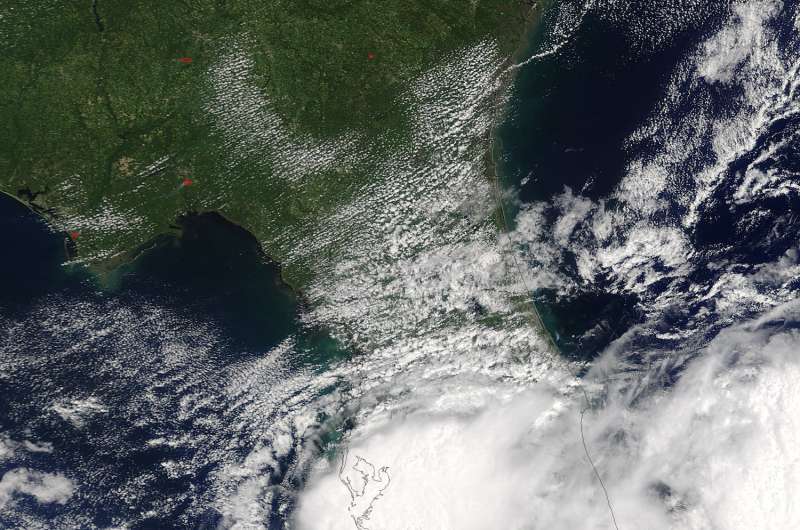NASA tracks Tropical Depression Emily across Florida into Atlantic

Just after Tropical Storm Emily made landfall in west central Florida, NASA's Terra satellite passed overhead. As Emily was weakening and tracking east across the Sunshine State, NASA used data from NOAA's GOES-East satellite to create an animation that showed Emily's progression toward the Atlantic Ocean.
On July 31 at 11:55 a.m. EDT (1555 UTC) the Moderate Resolution Imaging Spectroradiometer or MODIS instrument aboard NASA's Terra satellite captured a visible-light image of Tropical Storm Emily over west central Florida. The image showed that the storm had consolidated and appeared rounded in visible imagery.
By 5 a.m. EDT (0900 UTC) on August 1, Emily had already tracked east across Florida and slid into the Atlantic Ocean. The center of Tropical Depression Emily was located near 28.3 degrees north latitude and 80.1 degrees west longitude. That's about 50 miles (85 km) north-northeast of Vero Beach, Florida. Maximum sustained winds were near 30 mph (45 kph) with higher gusts.
The National Hurricane Center (NHC) said that some slight strengthening is possible during the day or so, but Emily is also forecast to lose its tropical characteristics within a day or two. The estimated minimum central pressure is 1011 millibars.
Infrared and visible imagery of Emily from July 30 to August 1 was captured by NOAA's GOES-East satellite captured and made into an animation from NASA/NOAA's GOES Project at NASA's Goddard Space Flight Center in Greenbelt, Maryland. NOAA manages the GOES series of satellites, and NASA uses the satellite data to create images and animations. The animation showed the storm really consolidated on July 31 along the central west coast of Florida, then tracked east over the state and exited into the Western North Atlantic Ocean on August 1. Clouds seen in the animation as a line south of Emily's center are associated with a stationary front.
On August 1, NHC said that radar and surface observations over east-central Florida indicate that Emily's circulation has become quite elongated. Water vapor imagery also shows that drier mid-level air has moved over the northwestern portion of the circulation, which has limited the amount of convection near the center overnight. Some deep convection is noted along a trough axis well to the northeast of Emily.
The depression was moving toward the east-northeast near 12 mph (19 kph) and a turn toward the northeast with an increase in forward speed is expected later in the day on August 1. On the forecast track, the center of Emily will move away from the east-central coast of Florida today and remain well off the southeast U.S. coast during the next couple of days.
Provided by NASA's Goddard Space Flight Center


















